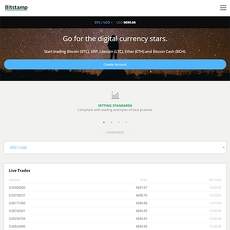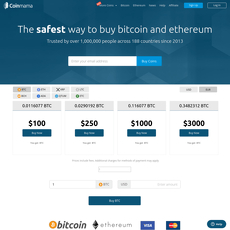Paxful Review
Paxful
paxful.com
Paxful Review Guide: Everything You Need To Know (and FAQs Answered!)
Ever tried to swap Bitcoin for cash and ended up lost in a maze of fees, sketchy websites, or downright scams? You’re not alone. Whether you’re just getting started with crypto or looking for a smoother way to turn your BTC into dollars, the search for the “right” exchange is confusing. With so many platforms promising fast trades and “unbeatable” rates, how do you know which one actually delivers?
If you’ve stumbled across Paxful, you’re in good company—millions already use it for peer-to-peer (P2P) Bitcoin trading. But is it really user-friendly, safe, and worth your time?
Why BTC-to-USD Exchanges Matter (and Typical Headaches You’ll Face)
Crypto’s big promise is “borderless money,” but if you’ve ever tried to cash out or buy Bitcoin for fiat, you know the hype doesn’t always match reality.
- Fraud & Scams: Some platforms lure in beginners with great rates, then disappear with your money. The Better Business Bureau recorded thousands of crypto scam complaints in the last year alone.
- High/Hidden Fees: You spot an amazing exchange rate, hit “buy,” and realize you’re paying far more thanks to sneaky extra charges.
- Confusing Platforms: Some sites are so complicated that even seasoned traders get headaches figuring out how to complete a simple trade.
- Regulatory Gray Areas: Legal roadblocks can freeze your funds or leave you stuck only halfway through the cash-out process—no fun.
Sound familiar? These problems still trip up crypto users every day. That’s exactly why picking the *right* BTC-to-USD exchange is so important.
How This Guide Will Help You
There’s a reason why so many people keep asking about Paxful whenever the cash-for-Bitcoin question pops up. In this guide, I’m pulling back the curtain to show:
- What sets Paxful apart from the usual suspects
- Where it excels, and where you’ll want to pay extra attention
- Real talk about the process—no fluff
- Exactly what’s safe, what’s risky, and how to avoid rookie mistakes
Confused by disclaimers, old Reddit threads, or vague “expert” advice? I’m here to lay it out, step-by-step. You won’t just get the sales pitch—you’ll get practical info you’d only otherwise hear from someone who’s tried it firsthand (and probably learned the hard way).
What to Expect
Ready to actually understand how Paxful works—and whether it’s right for you? I’ll show you everything you need to know, including:
- How you actually buy or sell BTC for fiat on Paxful
- Common hurdles and smart workarounds
- Tactics for avoiding scams and keeping your crypto safe
- Insider tips on features you may not expect
- Clear answers to the real questions people are Googling about Paxful, right now
Curious what makes Paxful different from giant exchanges or why so many people trust P2P? Or maybe you just want to know, “Will this save me time, money, and stress compared to what I’m using today?” I’ll walk you through all of it. So, what’s next? Let’s start by getting to know Paxful and how it actually connects buyers and sellers—hint, it’s not your typical exchange. Ready to see what this platform is really all about?
What Is Paxful and How Does It Work?
Ever wished you could just hand your Bitcoin directly to another person and get dollars in return—no confusing interfaces, no scary third-party holding your money? That’s basically the magic Paxful offers. It’s not your typical crypto exchange. Paxful is a peer-to-peer (P2P) Bitcoin marketplace, matching people who want to buy with people who want to sell, in pretty much any way the two can agree on.
“The world’s most valuable currency isn’t Bitcoin. It’s trust.”
On Paxful, the platform itself doesn’t sell you Bitcoin or buy it from you. Instead, you’ll be trading with another real human—think of it as an eBay for Bitcoin but with smart protections against funny business.
Peer-to-peer explained
Let’s break this down. On most exchanges, you upload your cash, the site matches you up automatically, and all of the transactions go through their super-controlled system. You don’t choose who you’re trading with or how it happens.
Paxful flips the script:
- Decentralized matchmaking: You pick from offers posted by real users around the world. Some want to buy Bitcoin for cash in person; others are willing to use PayPal, bank transfers, or even gift cards.
- Direct communication: You get to chat with your trading partner through a secure chat, negotiate details, and agree on the terms that suit you both best.
- Escrow protection: Paxful doesn’t just leave you hanging—your BTC is locked in escrow until you’ve paid and the seller confirms it. Scammers hate that.
P2P trading platforms like Paxful are especially loved by people who:
- Don’t want to trust big centralized platforms that could freeze their cash
- Need payment options not supported elsewhere (Ever tried buying Bitcoin with an Amazon gift card? Now you can!)
- Value privacy or have trouble passing strict bank KYC checks
A 2023 study by Chainalysis showed peer-to-peer markets are crucial for crypto access in regions with limited banking—and the demand keeps rising. The variety of payment options is unbeatable. Just check Paxful’s homepage: you’ll see offers from people trading Bitcoin for everything from Zelle to Western Union and even local cash meetups.
How to get started on Paxful
Curious how you’d actually use Paxful? Here’s what the process looks like when you’re ready to dip your toes in:
- Sign Up: Create an account with your email and set a strong password. They’ll ask you to verify your email—nothing scary.
- Verify (if needed): Want higher trade limits or extra features? Complete identity verification with a selfie and some ID. But for small trades, you can often skip this step.
- Explore offers: Use search filters to pick your country, payment method (Wells Fargo? Walmart gift card?), and the amount of Bitcoin you want to buy or sell.
- Choose a trading partner: Look at their ratings, reviews, and trade history. Always aim for someone with a high trust score and positive feedback.
- Start the trade: Message your partner—work out the payment details using Paxful's built-in chat.
- Payment and escrow: Send your payment as agreed. Your Bitcoin stays safely locked in escrow until the seller confirms they got the money.
- Release and review: Once payment is confirmed, the BTC is released to your wallet. Don’t forget to leave a review—it helps others pick safe traders.
A lot of people are surprised how flexible and "human" the whole process feels. It’s not rare to end up chatting with another trader about crypto trends or sharing a laugh about local payment quirks. Of course, I’ll be straight with you: it comes with unique risks and rewards, and you’ll want to do your homework before jumping in.
Do you wonder how safe this all really is? Or if your funds really are protected from “bad apples” in the system? Don’t worry—I’ll cover every angle (escrow, security secrets, and legal pitfalls) next.
Should You Trust Paxful? Safety, Security, and Legitimacy
Let’s face it—when you’re dealing with your hard-earned money, trust isn’t something you give away lightly. In crypto, a little paranoia is healthy! "Trust, but verify" isn’t just a saying; it can save you from heartbreak. I’ve seen people gain financial freedom with P2P crypto, but I’ve also watched folks lose out to scams because they assumed any platform with a slick website was safe.
Security basics
So, what does Paxful actually have in place to protect you? Here’s what I’ve seen:
- Escrow protection: Every trade on Paxful runs through an escrow system. Your BTC is safely locked up until both you and your trading partner confirm the deal. No confirmed payment = no coins leave the pot. If there’s a dispute, an actual person (yes, a human) steps in to help. That’s a huge safety net, not just tech jargon.
- Two-factor authentication (2FA): Enable this right away. It’s the best way to prevent a rogue actor from logging into your account, even if they somehow grab your password. Need a real world example? When 2FA is switched on, stolen passwords alone don’t work. Fact: Google once said “2FA can block up to 100% of automated bot attacks.”
- Account alerts and withdrawal checks: Paxful sends alerts for unusual logins or withdrawal requests. It’s not a fortress, but it’s a solid lock on the door—especially when paired with strong passwords and 2FA.
Do scams happen? Yes, as with any P2P platform. But most horror stories start when users skip safety steps—like trading outside of escrow or not double-checking links. Stay sharp, and it’s like buckling your seatbelt: you massively cut your risk.
Is Paxful legal in your country?
This is where it gets tricky, and you need to pay attention. Paxful lets you trade in loads of countries—but not everywhere.
- Restricted locations: Paxful isn’t available in some jurisdictions, including New York, Texas, and a handful of other U.S. states, plus countries on international sanctions lists (think North Korea, Sudan, and a few others). Always check their official restricted list before you create an account. The rules change, sometimes overnight.
- KYC/AML policies: If your trade volume hits certain thresholds, you’ll need to provide ID (passport, driver’s license, etc.) for verification. It’s not just bureaucracy—the platform needs to follow anti-money-laundering laws. On the plus side, this weeds out a lot of would-be scammers.
Tip: Don’t try to sneak around bans using VPNs or fake documents. If you get caught, you risk losing access to your funds—and platforms do share data with banks and officials when required by law. Is it worth it? Nope.
User trust and reputation
How do real users feel about Paxful? Here’s the lowdown I've seen—and what review sites say:
- Mixed user reviews: On Trustpilot and Reddit, you’ll see plenty of folks praising Paxful for helping them buy BTC quickly, especially where traditional banking is a pain. But there are also complaints—usually about disputes, slow customer service, or issues with scammy buyers/sellers.
- Community-driven grading: Reputation is huge on Paxful. Every trader has a public score based on past deals. I always recommend sticking to folks with high ratings and lots of completed trades. If you’re ever unsure, message the seller directly and ask questions.
- Transparency: Compared to some exchanges that hide contact info or sweep bad reviews under the rug, Paxful has a pretty public face. They respond on social media, and you can reach a real support team in a dispute—though in busy periods, it may take a bit.
“It’s not just about the technology; it’s about the people you’re trading with. Reputation is your real currency on Paxful.”
So, does all this make Paxful bulletproof? Of course not—no platform is perfect. But with the right habits, you can trade with your eyes open, not crossed fingers.
Still wondering what it actually feels like to trade on Paxful, from the first click to final payout? I’ll walk you through the whole process next—fees, payment options, case studies, and smart shortcuts included. Ever wondered if there’s a hidden cost or the fastest way to get your cash out? Let’s see exactly how trading on Paxful works—keep on reading!
How Does Trading Work on Paxful? Process, Fees, and Payment Methods
Ever wondered what it’s really like to use Paxful? Trust me, the process feels more like using Craigslist than an online bank. But that’s not a bad thing! It puts you in the driver’s seat—just make sure you buckle up before jumping in, because each trade is a bit of an adventure. Let’s break down what you should expect every step of the way, from picking a deal to paying (and getting paid).
Making a Trade (Step by Step)
Ready to swap your Bitcoin for real-world cash? Here’s how it actually works on Paxful (no surprises):
- Find an Offer: You browse the marketplace for someone selling (or buying) Bitcoin in your preferred currency and payment method. Think of it like online shopping, except you’re choosing a live human on the other end.
- Check the Seller’s Reputation: Paxful lets you see ratings, trade volumes, and feedback. Don’t skip this. Top traders usually have 95%+ positive feedback for a reason. If you see lots of complaints about slow responses, your wallet will thank you for steering clear.
- Start the Trade: Click “Buy” (or “Sell”), enter the amount, and send a message. This opens up a direct chat. Want to test their trustworthiness? Try asking a simple question before sending any money. Real sellers answer quickly and politely.
- Escrow Protection: Paxful immediately locks the Bitcoin in escrow. This is your shield—the seller can’t run away with your cash without releasing the BTC, and vice versa. “The root of trust is transparency,” as I always say to friends new to P2P trading.
- Payment Time: Follow the seller’s instructions. Pay them using the agreed method (could be bank transfer, PayPal, or even gift cards), then mark as paid. Provide proof if asked—screenshots or receipts.
- Release Time: The seller confirms they got your funds, releases the BTC from escrow, and it lands in your Paxful wallet. Easy—but only if both sides stick to the script.
Tip: If something smells fishy, you can always hit the “Dispute” button. Paxful’s moderators will step in to check receipts and chat logs, which usually protects honest users.
Supported Payment Methods
This is where Paxful shines above most crypto exchanges—the sheer number of ways to pay (or get paid) is borderline wild. Here’s what I’ve personally used or seen in just the last year:
- Bank Transfers—still a staple for most serious traders
- PayPal, Skrill, Zelle, and Cash App—super handy for US and EU users
- Gift Cards—Amazon, iTunes, Steam, Google Play, even obscure options like Bass Pro Shops (yes, really)
- Cash in Person—for those who like face-to-face deals (pro tip: always meet in busy places, stay safe)
- Mobile Money and Prepaid Cards—huge in Africa, Asia, and Latin America
A recent industry study showed Paxful supported over 350 payment methods as of 2024. Compare that to major exchanges, and it’s clear—if you can name it, someone on Paxful probably accepts it. That’s a real lifeline where traditional banks don’t reach.
Fees to Watch For
Let’s talk fees, because hidden costs are a rookie mistake (and no one likes surprises when cash is on the line).
- Buying BTC: Good news—you don’t pay direct fees as a buyer. Instead, sellers set their own price and usually factor in a markup of 1%-10% (sometimes more, especially for odd payment types like gift cards).
- Selling BTC: Expect a 0.5% to 5% fee, based on your payment method. Gift cards sometimes tax you a whopping 5%. Cash or bank transfers tend to have the lowest Paxful commission (around 0.5%-1%).
- BTC Withdrawals: There’s a miner fee when you send BTC out of your Paxful wallet—this isn't unique to Paxful, but it fluctuates with network demand.
- Third-Party Fees: PayPal, your bank, or a gift card issuer may add their own charges. Always check beforehand—what you see in a trade isn’t always what you ultimately get in your bank.
Pro tip: Watch out for too-good-to-be-true deals with massive markups or fishy sellers. Sometimes “zero Paxful fee” actually means you’ll pay way more in hidden costs. Transparency matters, and reading the fine print can save you more than a little frustration.
“It’s not about avoiding mistakes, it’s about knowing how the game is played.” — a trusted Paxful seller once told me, after I nearly blew a deal over a misread payment instruction.
Feeling ready to test-drive Paxful’s trading engine, or wondering how it measures up to giants like Coinbase, Binance, or other P2P sites? Stick around, because next up, we’re going to line up the competition and see who really comes out on top—and why choosing the right BTC-to-USD exchange could save you huge headaches (and cash). Which one will fit best for you? Let’s find out…
Paxful vs. Other BTC-to-USD Exchanges
Let’s get real—there’s no shortage of ways to swap your Bitcoin for dollars. But how does Paxful actually stack up? Whether you’re down for a lightning-fast swap or just want the simplest route, choosing the right path matters.
Centralized exchanges
Ever used Coinbase or Binance? These big names are as close to “crypto mainstream” as it gets. Here’s the lowdown:
- Ease of use: They both have slick interfaces, mobile apps, and step-by-step guides for newbies. If you can use PayPal, you can use one of these platforms.
- Speed: Buy and sell in just a few taps—and settle to USD, often instantly. No need to wait for someone else to bite your offer.
- Regulation: Fully regulated in many countries, but that comes at a cost: you’ll need to go through rigid identity verification (KYC).
- Fees: While Coinbase’s fees can go over 3% per trade (ouch!), Binance is generally cheaper—but both add spreads that can eat into your profits.
So why do folks still flock to Paxful? Here’s a story: A friend in Nigeria struggled to buy Bitcoin on Coinbase, blocked by local banking rules. With Paxful, he paid in Naira with a local method and finished the trade in less than 15 minutes. That’s something a centralized exchange can rarely match, especially in underbanked regions.
"The greatest advantage an exchange can give you is the freedom to use your own money your own way."
If you’re in a country where crypto isn’t mainstream—or just want tons of ways to pay—Paxful may be the lifehack you need.
Other P2P networks
Paxful isn’t the only peer-to-peer game in town. LocalBitcoins was a giant in the space before shutting down in 2023 (a sign of how fast things change in crypto). Now, the main competition includes:
- Hodl Hodl: Similar escrow model, lower KYC requirements, but far fewer payment options.
- Bisq: Fully decentralized, privacy-first—but the learning curve is steep and trades can take much longer.
- BitValve: Another up-and-comer, offering multi-coin P2P but not nearly as many users as Paxful.
What sets Paxful apart? Liquidity and choice. With over 300 payment methods and one of the largest global user bases, you’re almost never stuck waiting for a buyer or seller to show up. If you want to use a prepaid gift card or local e-wallet to cash out, Paxful’s your go-to. Not many P2P exchanges offer that kind of flexibility.
But here’s something to keep in mind: P2P means you’re dealing with people, not faceless algorithms. That’s empowering, but it does mean every trade has its quirks—chat negotiation, waiting for responses, and the occasional lowball offer.
When Paxful is the best choice
So, when does Paxful really shine? Here are the scenarios I see again and again:
- You need to trade with unconventional payment methods. Whether it's a Steam gift card, a mobile money wallet, or your local bank, Paxful likely supports it.
- You want to cash out where “traditional” crypto exchanges don’t operate. Living in a less-supported country? This is where Paxful can be a lifesaver.
- You value privacy—within reason. While some trades still require KYC, Paxful’s user-to-user system offers a bit more discretion than the big exchanges.
- You enjoy haggling or finding the best deals. P2P markets reward sharp-eyed traders who don’t mind some extra back-and-forth.
Of course, there are times when something like Coinbase is just plain easier—especially for folks looking for pure speed, airtight regulation, or smooth USD withdrawal into a U.S. bank. No haggling, no chat, just click and done. But if you’re feeling adventurous or want to unlock payment methods the majors can’t touch, Paxful’s worth a look.
Still on the fence? The reality is, picking the right exchange isn’t just about “the best platform” overall—it’s about the best one for you. But how do you actually figure that out? What should you be looking for before trusting your cash or coins to any service?
Stick around—I’m about to break down the essential checklist every smart crypto user needs. Let’s see how Paxful (and its rivals) measure up under the hood.
What Should You Look for in a BTC-To-USD Exchange?
Choosing the right exchange to swap your Bitcoin for dollars isn’t just about chasing the best rate. There’s real money, privacy, and even your online safety on the line. I’ve seen plenty of crypto fans make hasty decisions (me included, back in the day) and pay for it. Here’s what you absolutely need to consider before clicking that “trade” button.
Security, Legal, and KYC/AML
Let’s get one fact straight:
"Security isn’t expensive—it's priceless."
Before you trust any platform (yes, even one as popular as Paxful), check these essentials:
- Escrow Protection: Always make sure the exchange uses escrow for trades. Paxful’s escrow holds crypto safely while both sides meet their end of the deal. Without escrow, you’re just crossing your fingers.
- Two-Factor Authentication (2FA): If you don’t lock your account with 2FA, you might as well leave your door open. Paxful requires (and highly encourages) 2FA for all sensitive actions. Never skip this step.
- KYC/AML Requirements: Some love total privacy, but anti-fraud rules are real. Paxful makes you show ID for bigger trades or certain payment methods. Does this annoy people? Yes. But, it’s also why you see fewer scams compared to totally anonymous platforms. Some studies even show platforms with strong KYC cut fraud by up to 60%—that’s peace of mind.
- Legal Status: Make sure Paxful (or any exchange) operates in your country—check their legal page for updates. Trading on banned or unsupported platforms can get your account nuked mid-trade.
You wouldn’t buy a car on Craigslist from a seller with zero ID, right? Treat your crypto trades with the same caution.
Payment Options, Liquidity, and Fees
Time for some honest money talk.
- Payment Methods: Want to use PayPal, a bank transfer, or maybe trade an old iTunes gift card? Paxful is famous for offering almost every method you can think of—over 350 last I counted. But watch for the small print: some methods come at a steeper cost, and some draw riskier partners.
- Liquidity: How fast can you buy or sell? If an exchange is popular and active like Paxful, you’ll see tons of offers. This means quick trades—no waiting days for your cash, which happens on slower, newer P2P sites. Always check the volume. If there aren’t enough offers to match what you want, move on.
- Fees: On Paxful, buyers usually skate away fee-free, while sellers pay up to 1%. Sounds like a deal? Maybe, until you notice that offers with instant transfers or hard-to-find payment methods often hide slightly higher “margins” (extra mark-ups on price). Always compare; even “fee-free” can sneak in some costs.
Some users laugh off a few bucks in fees, but remember: over time, these eat into your profits—especially if you’re trading regularly.
Customer Support and User Experience
Let’s get real. Everyone loves a friendly UI until something goes wrong and you need actual human help.
- Support Team: Does the exchange offer real-time chat support, a helpdesk ticket system, or actually respond? Paxful generally scores above average here, especially compared to more “hands-off” rivals. Some stories on Reddit brag about dispute moderators resolving stuck trades in just an hour.
- User Experience: If the platform feels like a puzzle from 1996, move on. You want an interface that’s clear, snappy, and doesn’t bury important info. Paxful’s site and app are super straightforward—even for total beginners—which is one reason it’s so popular globally.
- Reputation: Always, always check recent reviews—nobody remembers a smooth trade, but everyone posts when it goes wrong. Look at sites like Trustpilot or crypto forums for the latest feedback before you risk your dollars.
Picking the right BTC-to-USD exchange isn’t rocket science, but it does need a sharp eye and a dash of caution. Think you’ve seen it all? Just wait until you discover some of the wild user stories and surprising trade tricks people want to know about. Ready for those burning Paxful questions—the ones you’d be too shy to ask on Telegram? I’ll tackle those next, so keep going…
Top Questions People Ask About Paxful (FAQ Section)
Let’s cut through the noise and clear up what Google (and probably you) are always asking. Real talk, no stone left unturned—let’s hit the hottest questions about using Paxful, so you feel confident pressing “sign up” or “trade now” (or deciding to walk away!).
Is Paxful safe and legit?
When it comes to crypto, nobody wants to be the next cautionary Reddit post. The truth is, Paxful has operated since 2015 and serves millions of users across 100+ countries. They use escrow for every trade—so your Bitcoin is locked and only released when both parties meet the deal conditions. There’s also two-factor authentication (2FA) and ID verification to keep accounts locked down. But remember: P2P means you’re dealing with real people, so scams happen (that’s the internet!). The key is to trade only with sellers or buyers who have lots of positive feedback. According to a Chainalysis crypto crime report, P2P platforms see more scams than big centralized exchanges—but Paxful’s security tools put you in control. Think before you click.
“Trust is hard to earn and easy to lose—especially in crypto.”
Can you buy Bitcoin without verification?
Yes… to a point. For smaller trades, you might not need to upload your passport and tax returns. Paxful lets you buy and sell up to a limited amount (usually under $1,000) with minimal KYC verification. Go over that, or use certain payment methods? Be ready to scan your ID. It’s their way of dodging bad actors. My tip: if privacy matters, stick to lower values. If you want higher limits, get your docs ready upfront—it’ll speed everything up later.
How long does it take to get Bitcoin on Paxful?
If you’re buying Bitcoin for the first time, you can often go from sign-up to BTC in your wallet in under 30 minutes. The real timeline depends on:
- How fast you verify your account.
- Which payment method you pick. Bank and PayPal are often instant; cash deposits might take longer.
- Your trade partner’s speed. Some sellers reply within seconds, others might keep you waiting.
Once the seller confirms payment, Paxful’s escrow releases your crypto almost immediately. I’ve seen trades wrap up in under five minutes. But—if either side is slow (or there’s a dispute), expect delays.
Can I sell Bitcoin for cash?
A lot of folks use Paxful to trade BTC for good old cash. Yes, it’s possible. There are three main options:
- Cash deposits at a bank branch.
- Face-to-face cash trades. (Meet up, hand over cash, get BTC released.)
- Third-party cash pickup services.
Just a heads-up: only meet in safe, public places if you’re doing in-person deals. Always use Paxful’s escrow, and never agree to release Bitcoin until you’ve counted (and double-counted) physical cash yourself. I’ve heard stories both ways—some people love the flexibility, others got burned by acting too fast.
Tips for avoiding scams on Paxful
It’s the wild west out there sometimes. But if you follow a few key rules, you’ll avoid 99% of trouble:
- Always use escrow. Don’t click “release” until you have your cash/BTC/payment in hand.
- Pick traders with lots of positive feedback—think 90%+ and dozens (ideally hundreds) of completed trades.
- Read the offer terms closely. No shortcuts, no assuming. If it sounds sketchy, back out.
- Avoid off-platform communication. If someone wants to take the chat to WhatsApp, that’s a red flag.
- If something feels fishy, trust your gut and hit Paxful support immediately.
Just remember, scams usually rely on pressure and rushing—take your time and use the available security tools. According to user reviews, the majority of issues come from ignoring safety tips, not platform failures!
Got your curiosity piqued, or still not sure if this is the right approach for you? Stick with me—up next are my top resources, pro guides, and the must-read links you should check before hitting “buy” or “sell.” What’s the *one thing* everyone misses before their first Paxful trade? I’ll share it in the next section.
Resources: Helpful Links, Guides, and More
There’s nothing quite as satisfying as landing the perfect resource just when you’re about to make a big crypto decision. So, if you’re thinking seriously about exchanging Bitcoin to USD—or even trying a new crypto-fiat platform—here are some must-have tools and guides that I rely on myself (and wish I’d found sooner). These aren’t just helpful for Paxful users, but for anyone who’s serious about safe, confident crypto trading.
Must-read guides for new users
- BTC-to-USD Exchange Breakdown: Want actionable insights that focus on how real traders move between crypto and fiat? Check out the BTC-to-USD exchanges comparison here. It covers the pros, cons, payment methods, and how to swap even a small amount like 0.01 BTC to USD quickly and legally.
- Best Alternatives to Paxful: If you want to shop around before making a decision, take a look at our curated list of top-performing crypto-to-fiat platforms. Each one is analyzed for security, volume, speed, and real user feedback.
Extra reading: security and privacy tips
- Keep your crypto safe—everywhere: Security is the one thing you do not want to skimp on. I strongly recommend reading these crypto security tips for beginners and pros. Did you know that, according to a Chainalysis report, exchange hacks dropped nearly 54% year-on-year for platforms with strong 2FA and multisig? Don’t just trust luck.
- How KYC and AML should work: Tired of endless verification steps or worried your country has different rules? Here’s a go-to guide on KYC, AML, and global crypto regulations that makes the grey areas much clearer (with plenty of real-world examples).
If you like your research in a deep-dive format, our full BTC-to-USD exchanges guide walks you through everything from the business models at play, security essentials, legal status checks, to payment method comparisons and even things like customer support culture and app usability.
With all these tools, info, and insider tips, you’re set up to shrink your risk and up your confidence with every trade. Think there’s a resource missing or want a walkthrough of something tricky? Get in touch or stick around—because next, I’ll tell you not just whether you should try Paxful next, but how to tell when an exchange is truly right for you. Curious? The next section is where it gets even more personal…
Final Thoughts and My Tips for Making the Most of Paxful
If you’re reading this, you’re probably still weighing whether Paxful deserves your trust (and your Bitcoin). To be honest, after checking out dozens of crypto marketplaces and hearing from hundreds of users, I can say Paxful is a strong pick for anyone looking for flexibility and a massive range of payment options—especially if you like having control over who you trade with. But it’s not a magic bullet. Here’s what sticks out to me after watching this space for years.
Should you use Paxful for your next trade?
Let’s keep it real with some quick, honest pros and cons:
- Flexibility: There’s almost no payment method you can’t use. Bank transfer, PayPal, Zelle, gift cards, even cash in person. If you need options, Paxful’s a top player.
- Peer-to-peer (P2P): You’re not trading against a faceless exchange—you’re working directly with people, often getting better rates than you’d find with big centralized platforms. But yes, this also means you need to be alert for scams or dodgy offers.
- Beginner-friendly, but requires caution: Paxful makes onboarding pretty simple. That said, there’s a learning curve with P2P—especially around verifying your counterparty’s trust score and reading their reviews. Making a trade with the wrong person can be costly.
- KYC isn’t always required: For smaller trades, you can often stay under the radar. If you’re privacy-minded, this is a plus. But for anything serious, you’ll have to go through ID checks.
There are downsides to keep in mind. Scams do happen, mainly when people rush, cut corners, or ignore warning signs. An estimated one in twenty P2P users reports running into scam attempts, according to various community feedback surveys. Still, Paxful’s escrow system and dispute tools offer solid protection—just don’t let your guard down.
My advice? If you’re trading for the first time, stick to offers from experienced vendors with lots of positive feedback. Never click links or download attachments from anyone in the chat. And don’t be afraid to walk away from a deal if something feels fishy. Your Bitcoin is yours—don’t let impatience cost you.
What’s next in the world of BTC-to-USD exchanges?
The crypto landscape is changing every month. We’re seeing more exchanges adopt hybrid models that blend P2P flexibility with centralized security and support. Paxful has set the bar for accessibility, but I expect more competition—especially as traditional payment services and even banks start flirting with crypto. Regulation is also tightening up, pushing platforms to get stricter with KYC and anti-fraud systems.
If you want to stay ahead, keep an eye on:
- Platforms rolling out instant settlement options
- Expanded stablecoin support (USD Coin, Tether, etc.) for those who want less volatility than Bitcoin
- New security tools—like AI-powered scam detection or real-time ID verification
Basically: It’s smart to keep doing your homework. What works today could be outclassed tomorrow, and early adopters usually get the best deals and learning opportunities.
My Closing Advice
Don’t chase hype—chase what works for you.
If you want maximum control, a wide choice of ways to get paid, and a feeling of empowerment, Paxful is hard to beat. But be realistic about the risks. No platform, Paxful included, is risk-free. That’s why I always check out vendor reputations, read the terms closely, and only use reliable payment methods I’m comfortable with.
If you’re looking to step up your crypto game, go beyond the basics. Compare platforms regularly (there’s always something new around the corner), and never underestimate the value of reading up on security. Learn from others’ mistakes—it’ll save you money and headaches.
If you want more tips, reviews, or deep dives into new crypto tools, swing by Cryptolinks.com. I keep things honest, up to date, and focused on your safety and success.













